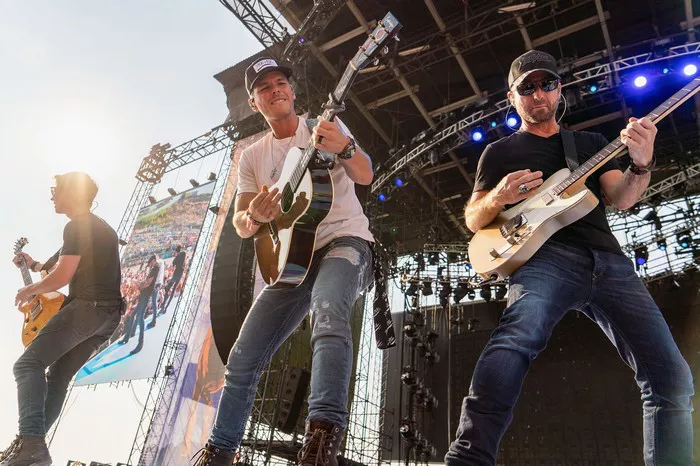Unveiling the Diversity of Country Music
When we hear the term “country music,” a specific sound may immediately come to mind – twangy guitars, heartfelt lyrics, and stories of rural life. However, the world of country music is far more expansive and diverse than a single stereotype can encapsulate. From traditional ballads to modern pop-infused tracks, country music has evolved into a complex tapestry of genres and styles, each with its own unique characteristics and influences. This essay delves into the rich variety of country music genres and styles, highlighting the evolution and diversity that make up this vibrant musical landscape.
Roots and Traditions: Traditional Country
Traditional country music, often referred to as “classic” or “old-school” country, serves as the foundation for the genre’s various offshoots. Emerging in the early 20th century, this style is characterized by its simplicity, heartfelt storytelling, and reliance on acoustic instruments such as guitars, fiddles, and banjos. Artists like Hank Williams, Patsy Cline, and Johnny Cash epitomize this genre, with songs that capture the essence of rural life, love, and loss.
Twang Meets Contemporary: Modern Country
As time marched on, country music underwent a transformation, giving rise to modern country. This style infuses traditional country elements with contemporary production techniques, resulting in a polished sound that appeals to a wider audience. Artists like Taylor Swift, Keith Urban, and Carrie Underwood have mastered this fusion, creating chart-topping hits that blend catchy melodies with relatable lyrics. Modern country often incorporates pop and rock influences, leading to a genre that bridges the gap between musical worlds.
Southern Roots and Rock Vibes: Southern Rock Country
Southern rock country represents a dynamic crossover between the Southern rock genre and country music. This style emerged in the 1970s and gained popularity with bands like Lynyrd Skynyrd and the Allman Brothers Band. Blending the energy of rock with the storytelling of country, Southern rock country boasts electric guitars, driving rhythms, and a hint of twang. This genre provides an avenue for those who enjoy both the raw power of rock and the narratives of country.
Bluegrass: A Banjo-Picking Subgenre
Bluegrass, a genre with deep Appalachian roots, is characterized by its lightning-fast instrumental solos, intricate vocal harmonies, and of course, the distinctive sound of the banjo. Pioneered by musicians like Bill Monroe and Earl Scruggs, bluegrass often tells stories of rural life and the challenges faced by working-class individuals. Its lively tempo and skillful musicianship make bluegrass a unique and captivating subgenre within the realm of country music.
Honky-Tonk and Outlaw Country: Rebel Anthems
Honky-tonk and outlaw country styles rebel against convention, celebrating the renegade spirit of country music. Honky-tonk, popularized by artists like Merle Haggard and Ernest Tubb, features tales of hard living and heartache, often with a touch of humor. Outlaw country, on the other hand, is associated with artists like Willie Nelson and Waylon Jennings, who rejected mainstream norms and embraced a more rebellious image. These subgenres embody the rugged individualism that has long been a hallmark of country music.
Frequently Asked Questions
1. How does modern country differ from traditional country?
Modern country takes the core elements of traditional country and blends them with contemporary production techniques and influences from other genres like pop and rock. This results in a polished sound that appeals to a broader audience while retaining the emotional storytelling characteristic of traditional country.
2. What sets bluegrass apart from other country music styles?
Bluegrass stands out due to its fast-paced instrumental solos, intricate vocal harmonies, and the prominent use of the banjo. It often focuses on narratives of rural life and challenges faced by ordinary people, creating a distinct and lively sound within the country music landscape.
3. What is the significance of outlaw country in the country music scene?
Outlaw country represents a rebellion against mainstream norms, embracing a more rugged and individualistic image. Artists in this subgenre, such as Willie Nelson and Waylon Jennings, forged their own path and brought a raw authenticity to their music, resonating with those who identified with their renegade spirit.
Conclusion: A Mosaic of Melodies and Stories
Country music, with its diverse array of genres and styles, is a testament to the genre’s ability to adapt, evolve, and resonate with a wide spectrum of listeners. From the traditional ballads that tell of heartache and love, to the modern hits that blend genres seamlessly, each facet of country music adds a unique thread to the musical tapestry. The growth of country music’s subgenres reflects not only the evolution of the genre itself but also the evolving experiences and emotions of its listeners. As we explore the various genres and styles within country music, we gain a deeper appreciation for the rich mosaic of melodies and stories that make up this timeless and ever-changing genre.

